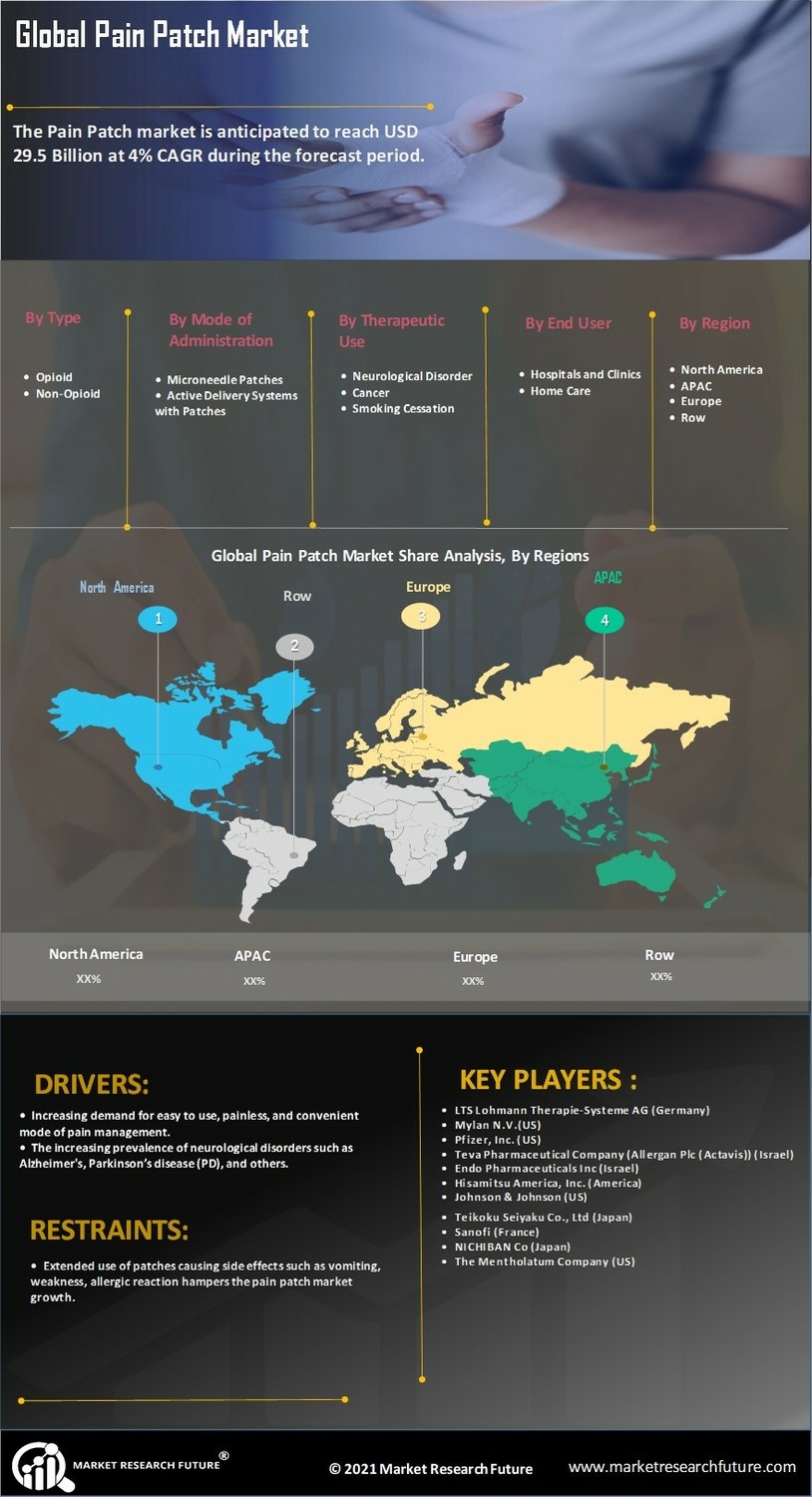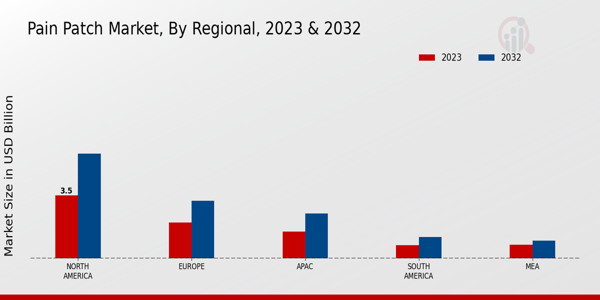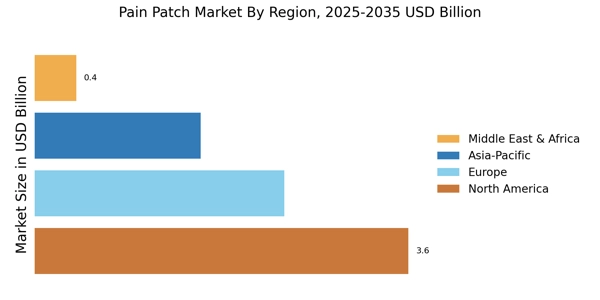Expansion of E-commerce Platforms
The Pain Patch Market is experiencing a notable shift towards e-commerce platforms for product distribution. With the increasing penetration of the internet and the growing comfort of consumers with online shopping, more patients are turning to digital channels to purchase pain relief products. This trend is particularly relevant in the context of pain patches, which can be discreetly ordered and delivered directly to consumers' homes. E-commerce not only enhances accessibility but also allows for a broader range of product options, enabling consumers to compare prices and read reviews before making a purchase. As a result, the Pain Patch Market is likely to see accelerated growth as online sales channels become more prominent, catering to the evolving preferences of modern consumers.
Increasing Prevalence of Chronic Pain
The Pain Patch Market is experiencing growth due to the rising prevalence of chronic pain conditions. According to recent data, approximately 20 percent of adults suffer from chronic pain, which significantly drives the demand for effective pain management solutions. As the population ages, the incidence of conditions such as arthritis, fibromyalgia, and neuropathic pain is likely to increase. This trend suggests that more individuals are seeking non-invasive and convenient options for pain relief, such as pain patches. The Pain Patch Market is thus positioned to expand as healthcare providers and patients alike look for alternatives to traditional oral medications, which may have undesirable side effects. Furthermore, the increasing awareness of pain management options is likely to contribute to the growth of this market.
Advancements in Transdermal Technology
Technological innovations in transdermal delivery systems are propelling the Pain Patch Market forward. Recent advancements have led to the development of patches that can deliver medication more effectively and with fewer side effects. For instance, the integration of microneedle technology allows for enhanced absorption of active ingredients through the skin, potentially increasing the efficacy of pain relief. This evolution in technology not only improves patient compliance but also expands the range of medications that can be delivered via patches. As a result, the Pain Patch Market is likely to see a surge in new product offerings that cater to diverse patient needs, thereby enhancing market competitiveness and consumer choice.
Rising Awareness of Non-Opioid Pain Management
The Pain Patch Market is witnessing a shift towards non-opioid pain management solutions, driven by increasing awareness of the risks associated with opioid use. As healthcare professionals and patients become more informed about the potential for addiction and side effects linked to opioids, there is a growing inclination to explore alternative therapies. Pain patches, which often utilize non-opioid analgesics, are emerging as a viable option for those seeking effective pain relief without the associated risks. This trend is likely to foster innovation within the Pain Patch Market, as companies develop new formulations and delivery methods that align with the demand for safer pain management alternatives.
Growing Preference for Home Healthcare Solutions
The Pain Patch Market is benefiting from a growing preference for home healthcare solutions. As patients increasingly seek to manage their pain in the comfort of their homes, the demand for easy-to-use, effective pain relief options is on the rise. Pain patches offer a convenient alternative to traditional treatments, allowing patients to apply them without the need for professional assistance. This trend is particularly evident among elderly populations and those with mobility issues, who may find it challenging to visit healthcare facilities regularly. The Pain Patch Market is thus likely to expand as manufacturers focus on creating user-friendly products that cater to this demographic, ultimately enhancing patient satisfaction and adherence to pain management regimens.



















Leave a Comment